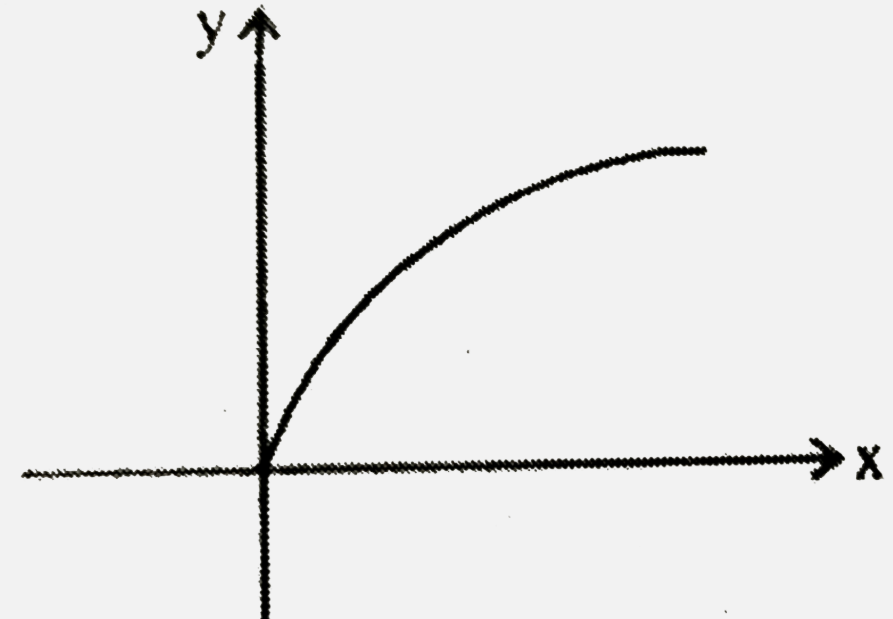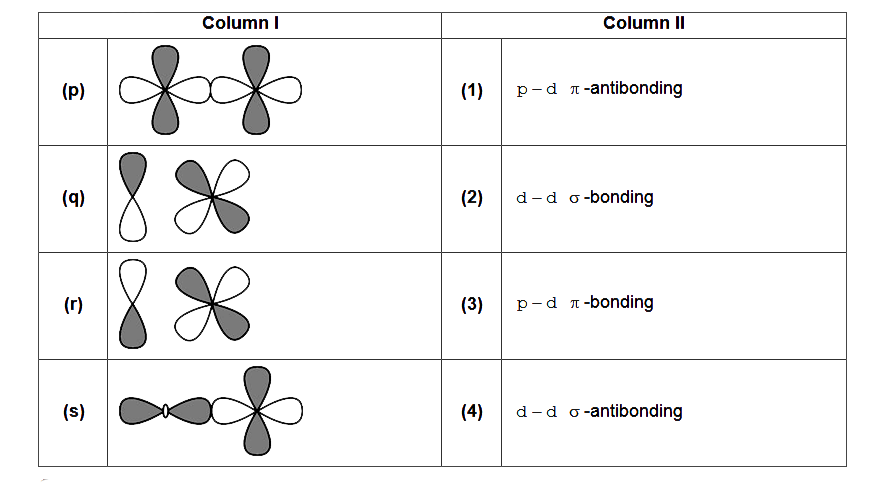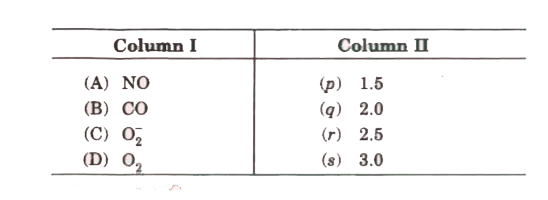OBJECTIVE TYPE QUESTIONS (D. MULTIPLE CHOICE QUESTIONS)(Integer Type Questions) from MODERN PUBLISHERS CHEMISTRY (HINGLISH) CHEMICAL BONDING AND MOLECULAR STRUCTURE for Class 11
| Class 11 | CHEMISTRY |
| Chapter | CHEMICAL BONDING AND MOLECULAR STRUCTURE |
| MODERN PUBLISHERS CHEMISTRY (HINGLISH) | OBJECTIVE TYPE QUESTIONS (D. MULTIPLE CHOICE QUESTIONS)(Integer Type Questions) |
| Medium | English |
| Academic Year | 2023-2024 |
Question 150
Most of the polyatomic molecules except a few such as CO2 and CS2 are linear or angular with a bond angle generally somewhat greater than 90∘ A bond angle is defined as the angle between the direction of two covalent bonds Since the atoms in molecules are in constant motion with respect to each other they are not expected to have a fixed value of bond angle Repulsion between non-bonded atoms alone does not provide an adequate explanation Hybridisation of bonding orbitals an adequate explanation Hybridisation of bonding orbitals also plays a very important role in detrmining the value of bond angle It has been observed that in hybridisation as the s-character of hybrid orbital increases the bond angle increases
Which of the following hybridisation may have more than one type of bond angle ? .View SolutionQuestion 152
In order to explain the characteristic geometrical shapes of polyatomic molecules, Pauling introduced the concept of hybridisation. The orbitals undergoing hybridisation should have nearly same energy. There are various types of hybridisations involving s, p and d - type of orbitals. The type of hybridisation gives the characteristic shape of the molecular or ion.
Which of the following has correct placement of lone pairs and bond pairs?View SolutionQuestion 153
In order to explain the characteristic geometrical shapes of polyatomic molecules, Pauling introduced the concept of hybridisation. The orbitals undergoing hybridisation should have nearly same energy. There are various types of hybridisations involving s, p and d - type of orbitals. The type of hybridisation gives the characteristic shape of the molecular or ion.
Which molecule does not have the same type of hybridisation as P has in PF5?View SolutionQuestion 154
In order to explain the characteristic geometrical shapes of polyatomic molecules, Pauling introduced the concept of hybridisation. The orbitals undergoing hybridisation should have nearly same energy. There are various types of hybridisations involving s, p and d - type of orbitals. The type of hybridisation gives the characteristic shape of the molecular or ion.
Which of the following molecule/ion does not have same number of lone pairs?View SolutionQuestion 155
Molecular orbital theory as developed by Hund and Mulliken concerns with the formation of molecular orbitals formed by linear combination of atomic orbitals. The electrons are present in these molecular orbitals. The molecular orbitals are filled. The molecular orbital configuration helps us to calculate bond order which gives information about the number of bonds present between atoms. The bond order is related to bond length and bond strength.
Which of the following combination does ot give σ MO (assume Z - axis as internuclear axis)View SolutionQuestion 156
Molecular orbital theory as developed by Hund and Mulliken concerns with the formation of molecular orbitals formed by linear combination of atomic orbitals. The electrons are present in these molecular orbitals. The molecular orbitals are filled. The molecular orbital configuration helps us to calculate bond order which gives information about the number of bonds present between atoms. The bond order is related to bond length and bond strength.
Which one of the following does not have single electron in a bonding molecular orbital?View SolutionQuestion 158
Molecular orbital theory as developed by Hund and Mulliken concerns with the formation of molecular orbitals formed by linear combination of atomic orbitals. The electrons are present in these molecular orbitals. The molecular orbitals are filled. The molecular orbital configuration helps us to calculate bond order which gives information about the number of bonds present between atoms. The bond order is related to bond length and bond strength.
Which of the following is expected to have largest bond length?View SolutionQuestion 159
Molecular orbital theory as developed by Hund and Mulliken concerns with the formation of molecular orbitals formed by linear combination of atomic orbitals. The electrons are present in these molecular orbitals. The molecular orbitals are filled. The molecular orbital configuration helps us to calculate bond order which gives information about the number of bonds present between atoms. The bond order is related to bond length and bond strength.
Which of the following will have maximum number of electrons in antibonding MOs?View Solution
All Exercises from MODERN PUBLISHERS CHEMISTRY (HINGLISH) Class 11 CHEMISTRY CHEMICAL BONDING AND MOLECULAR STRUCTURE
- PRACTICE PROBLEMS
- EXERCISE
- PRACTICE PROBLEMS
- EXERCISE
- CONCEPTUAL QUESTIONS (1)
- CONCEPTUAL QUESTIONS (2)
- CONCEPTUAL QUESTIONS (3)
- CONCEPTUAL QUESTIONS (1)
- CONCEPTUAL QUESTIONS (2)
- CONCEPTUAL QUESTIONS (3)
- NCERT (EXEMPLAR PROBLEMS) (ASSERTION AND REASON TYPE QUESTIONS)
- NCERT (EXEMPLAR PROBLEMS) (LONG ANSWER QUESTIONS)
- NCERT (EXEMPLAR PROBLEMS) (MATCHING TYPE QUESTIONS)
- NCERT (EXEMPLAR PROBLEMS) (MCQ BASED ON GIVEN COMPREHENSION)
- NCERT (EXEMPLAR PROBLEMS) (MULTIPLE CHOICE QUESTIONS (TYPE-I))
- NCERT (EXEMPLAR PROBLEMS) (MULTIPLE CHOICE QUESTIONS (TYPE-II))
- NCERT (EXEMPLAR PROBLEMS) (SHORT ANSWER TYPE QUESTIONS)
- NCERT FILE (NCERT)(TEXTBOOK EXERCISES)
- NCERT (EXEMPLAR PROBLEMS) (ASSERTION AND REASON TYPE QUESTIONS)
- NCERT (EXEMPLAR PROBLEMS) (LONG ANSWER QUESTIONS)
- NCERT (EXEMPLAR PROBLEMS) (MATCHING TYPE QUESTIONS)
- NCERT (EXEMPLAR PROBLEMS) (MCQ BASED ON GIVEN COMPREHENSION)
- NCERT (EXEMPLAR PROBLEMS) (MULTIPLE CHOICE QUESTIONS (TYPE-I))
- NCERT (EXEMPLAR PROBLEMS) (MULTIPLE CHOICE QUESTIONS (TYPE-II))
- NCERT (EXEMPLAR PROBLEMS) (SHORT ANSWER TYPE QUESTIONS)
- NCERT FILE (NCERT)(TEXTBOOK EXERCISES)
- REVISION EXERCISES (OBJECTIVE QUESTIONS)(ASSERTION REASON QUESTIONS)
- REVISION EXERCISES (OBJECTIVE QUESTIONS)(FILL IN THE BLANKS QUESTIONS)
- REVISION EXERCISES (OBJECTIVE QUESTIONS)(LONG ANSWER QUESTIONS)
- REVISION EXERCISES (OBJECTIVE QUESTIONS)(PASSAGE BASED QUESTIONS)
- REVISION EXERCISES (OBJECTIVE QUESTIONS)(SHORT ANSWER QUESTIONS)
- REVISION EXERCISES (OBJECTIVE QUESTIONS)(SHORT ANSWER QUESTIONS)(FILL IN THE BLANKS: )
- REVISION EXERCISES (OBJECTIVE QUESTIONS)(TRUE OR FALSE QUESTIONS)
- REVISION EXERCISES (OBJECTIVE QUESTIONS)(VERY SHORT ANSWER QUESTIONS)
- REVISION EXERCISES (OBJECTIVE QUESTIONS)(ASSERTION REASON QUESTIONS)
- REVISION EXERCISES (OBJECTIVE QUESTIONS)(FILL IN THE BLANKS QUESTIONS)
- REVISION EXERCISES (OBJECTIVE QUESTIONS)(LONG ANSWER QUESTIONS)
- REVISION EXERCISES (OBJECTIVE QUESTIONS)(PASSAGE BASED QUESTIONS)
- REVISION EXERCISES (OBJECTIVE QUESTIONS)(SHORT ANSWER QUESTIONS)
- REVISION EXERCISES (OBJECTIVE QUESTIONS)(SHORT ANSWER QUESTIONS)(FILL IN THE BLANKS: )
- REVISION EXERCISES (OBJECTIVE QUESTIONS)(TRUE OR FALSE QUESTIONS)
- REVISION EXERCISES (OBJECTIVE QUESTIONS)(VERY SHORT ANSWER QUESTIONS)
- HIGHER ORDER THINKING SKILLS
- HIGHER ORDER THINKING SKILLS
- OBJECTIVE TYPE QUESTIONS (A. MULTIPLE CHOICE QUESTIONS)
- OBJECTIVE TYPE QUESTIONS (B. MULTIPLE CHOICE QUESTIONS)
- OBJECTIVE TYPE QUESTIONS (B. MULTIPLE CHOICE QUESTIONS) (JEE (ADVANCED) FOR IIT ENTRANCE)
- OBJECTIVE TYPE QUESTIONS (B. MULTIPLE CHOICE QUESTIONS) (JEE (MAIN) & OTHER STATE BOARDS FOR ENGINEERING ENTRANCE)
- OBJECTIVE TYPE QUESTIONS (C. MULTIPLE CHOICE QUESTIONS)
- OBJECTIVE TYPE QUESTIONS (D. MULTIPLE CHOICE QUESTIONS)
- OBJECTIVE TYPE QUESTIONS (D. MULTIPLE CHOICE QUESTIONS)(INTEGER TYPE QUESTIONS)
- OBJECTIVE TYPE QUESTIONS (D. MULTIPLE CHOICE QUESTIONS)(MATCHING TYPE QUESTION)
- OBJECTIVE TYPE QUESTIONS (D. MULTIPLE CHOICE QUESTIONS)(MATRIX MATCH TYPE QUESTION)
- OBJECTIVE TYPE QUESTIONS (A. MULTIPLE CHOICE QUESTIONS)
- OBJECTIVE TYPE QUESTIONS (B. MULTIPLE CHOICE QUESTIONS)
- OBJECTIVE TYPE QUESTIONS (B. MULTIPLE CHOICE QUESTIONS) (JEE (ADVANCED) FOR IIT ENTRANCE)
- OBJECTIVE TYPE QUESTIONS (B. MULTIPLE CHOICE QUESTIONS) (JEE (MAIN) & OTHER STATE BOARDS FOR ENGINEERING ENTRANCE)
- OBJECTIVE TYPE QUESTIONS (C. MULTIPLE CHOICE QUESTIONS)
- OBJECTIVE TYPE QUESTIONS (D. MULTIPLE CHOICE QUESTIONS)
- OBJECTIVE TYPE QUESTIONS (D. MULTIPLE CHOICE QUESTIONS)(INTEGER TYPE QUESTIONS)
- OBJECTIVE TYPE QUESTIONS (D. MULTIPLE CHOICE QUESTIONS)(MATCHING TYPE QUESTION)
- OBJECTIVE TYPE QUESTIONS (D. MULTIPLE CHOICE QUESTIONS)(MATRIX MATCH TYPE QUESTION)
- UNIT PRACTICE TEST
- UNIT PRACTICE TEST
- EXAMPLE
- EXAMPLE
- SOLVED EXAMPLES
- SOLVED EXAMPLES







